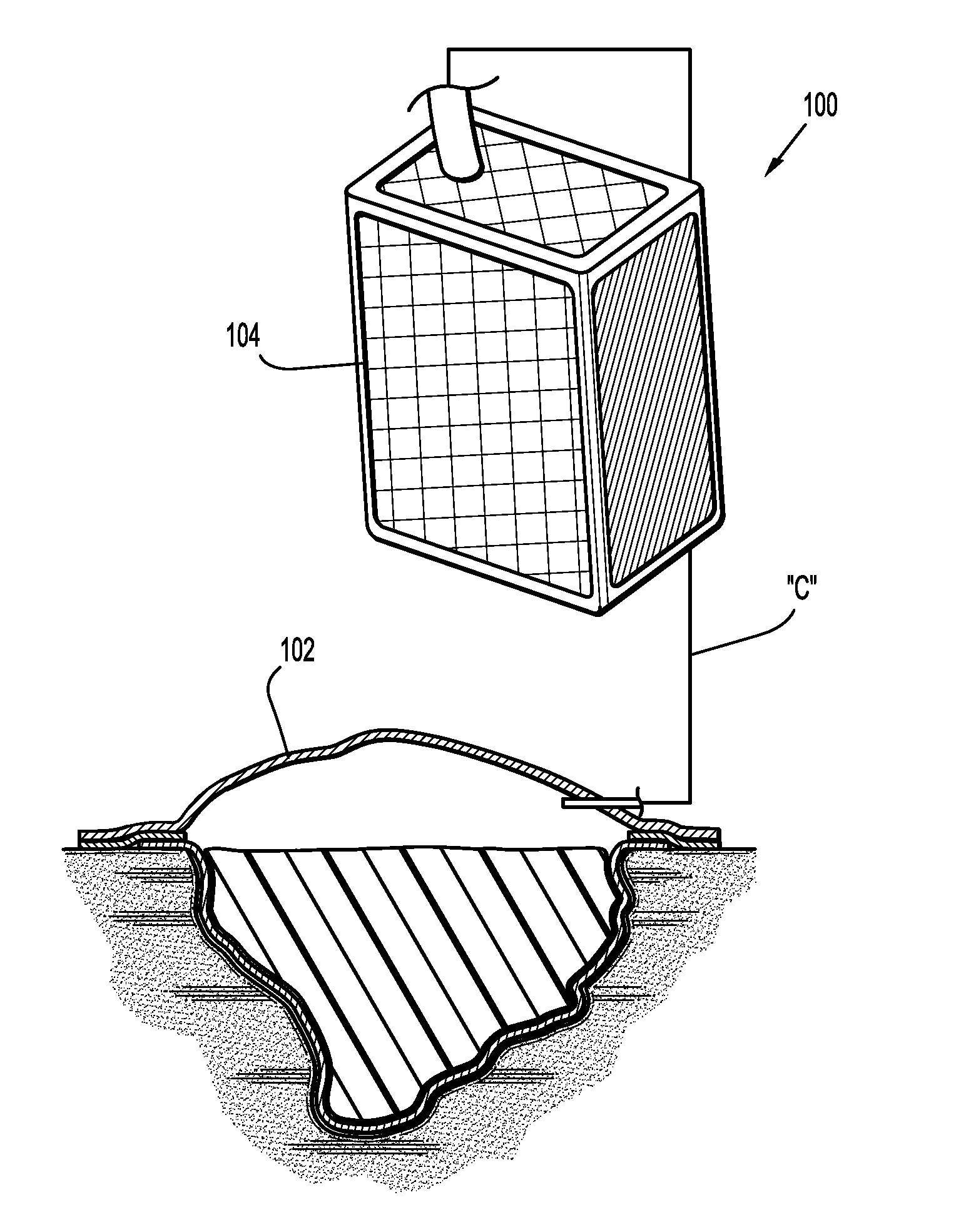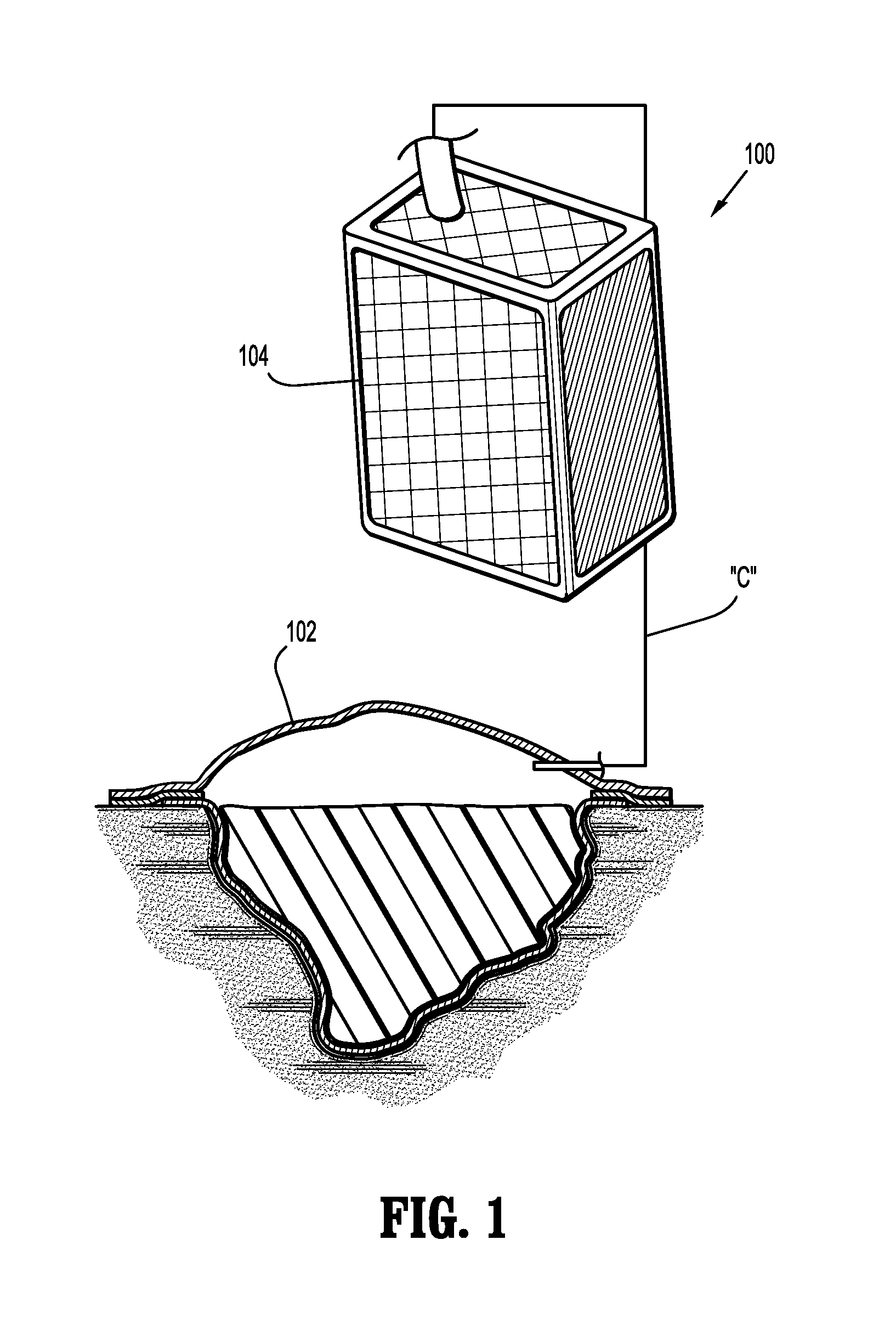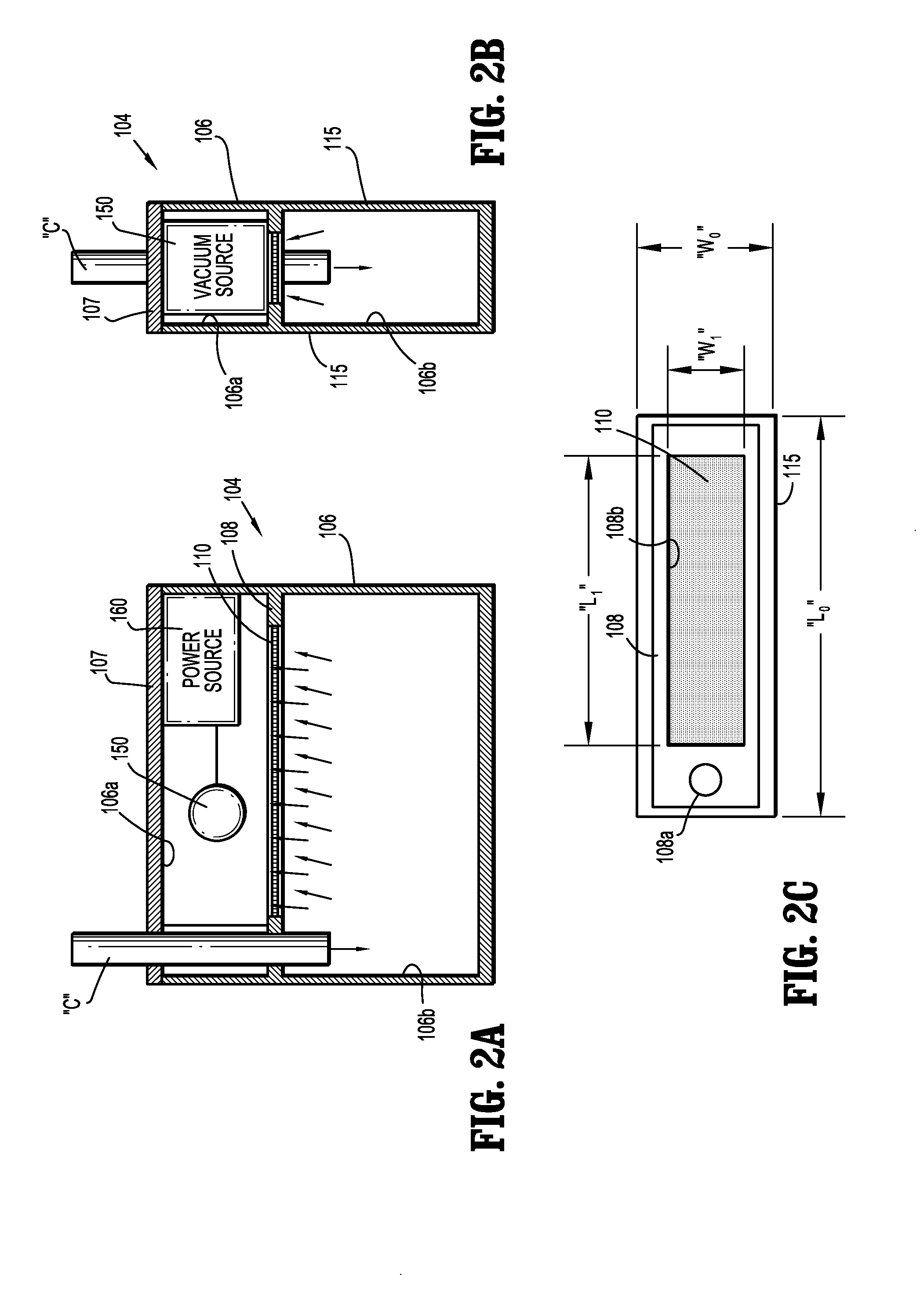Canister membrane for wound therapy system
a wound therapy and canister membrane technology, applied in the field of open wound treatment, can solve the problems of difficult wound closure, less able to close the wound naturally, less able to successfully close the wound, etc., and achieve the effect of maintaining the structural integrity of the system
- Summary
- Abstract
- Description
- Claims
- Application Information
AI Technical Summary
Benefits of technology
Problems solved by technology
Method used
Image
Examples
Embodiment Construction
[0022]The hydrophobic membranes of the disclosure will be discussed in connection with use in a wound therapy system applying subatmospheric pressure for promoting healing of a wound. Although the membranes will be described as relates to a wound therapy system, alternative uses for the membranes are envisioned. The wound therapy system includes a wound dressing and a portable subatmospheric pressure mechanism in fluid communication with the wound dressing. The subatmospheric pressure mechanism applies subatmospheric pressure to the wound to effectively remove wound fluids or exudates captured by the composite wound dressing, and to increase blood flow to the wound bed, thereby enhancing cellular stimulation of epithelial and subcutaneous tissue. The wound therapy system may be entirely portable, i.e., it may be worn or carried by the subject such that the subject may be completely ambulatory during the therapy period. The wound therapy system may be entirely disposable after a pred...
PUM
| Property | Measurement | Unit |
|---|---|---|
| Hydrophobicity | aaaaa | aaaaa |
| Vacuum | aaaaa | aaaaa |
| Symmetric field theory | aaaaa | aaaaa |
Abstract
Description
Claims
Application Information
 Login to View More
Login to View More - R&D
- Intellectual Property
- Life Sciences
- Materials
- Tech Scout
- Unparalleled Data Quality
- Higher Quality Content
- 60% Fewer Hallucinations
Browse by: Latest US Patents, China's latest patents, Technical Efficacy Thesaurus, Application Domain, Technology Topic, Popular Technical Reports.
© 2025 PatSnap. All rights reserved.Legal|Privacy policy|Modern Slavery Act Transparency Statement|Sitemap|About US| Contact US: help@patsnap.com



